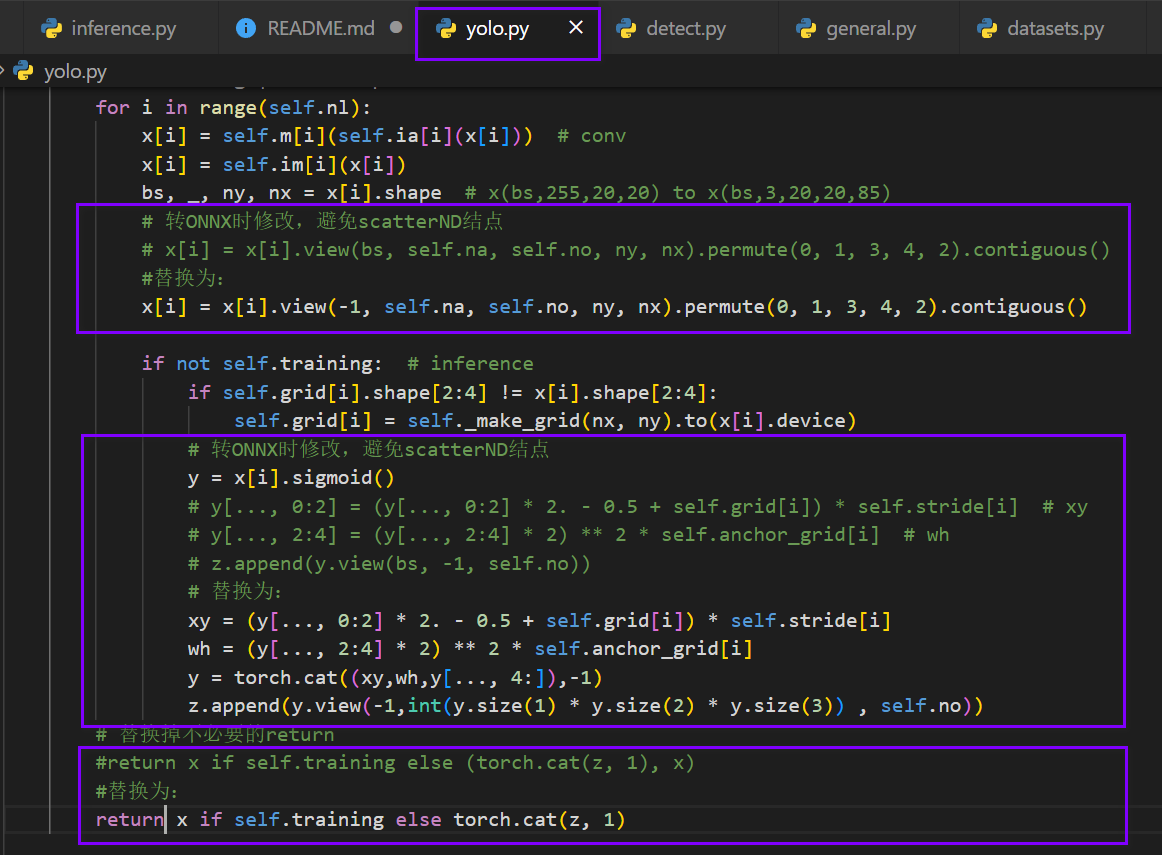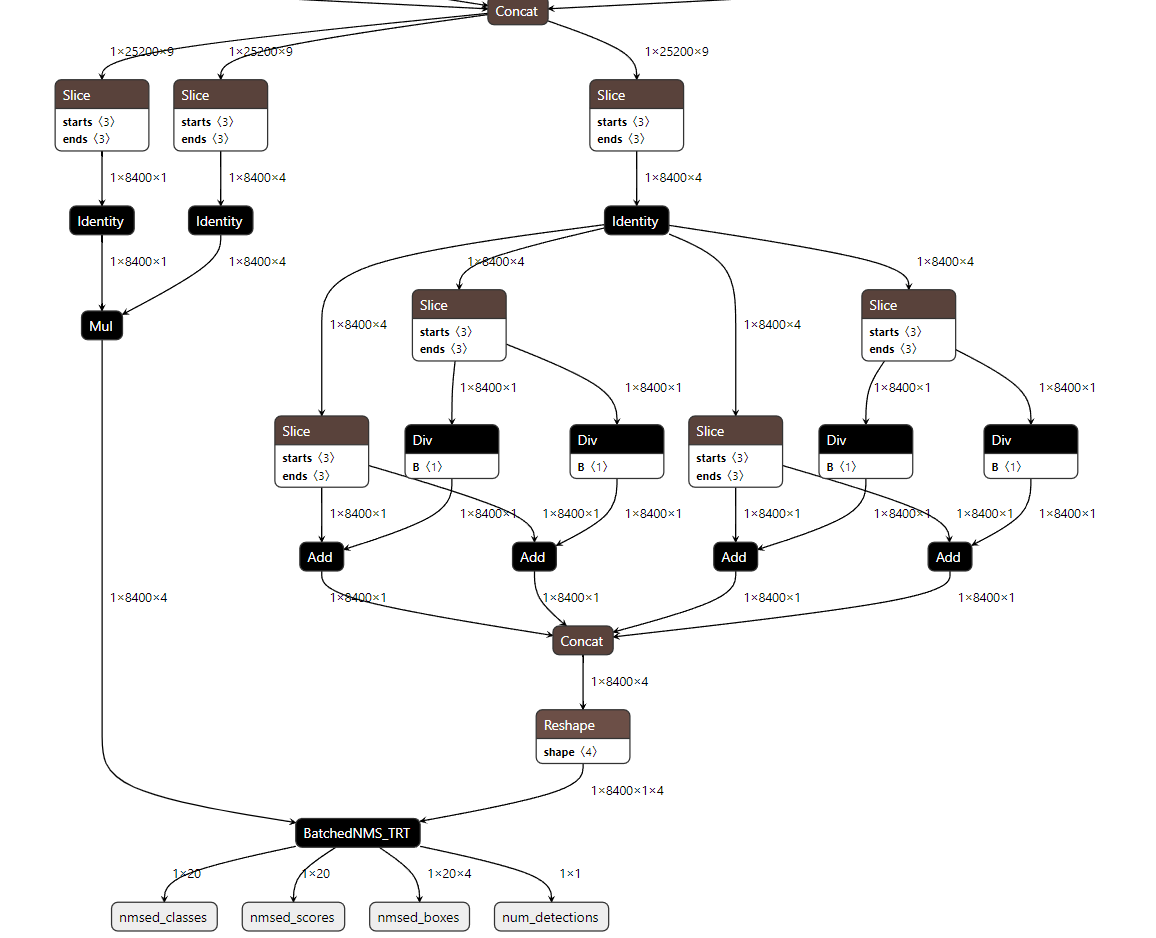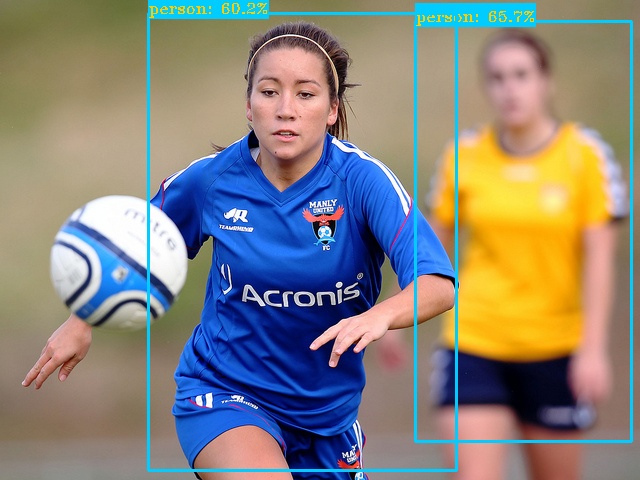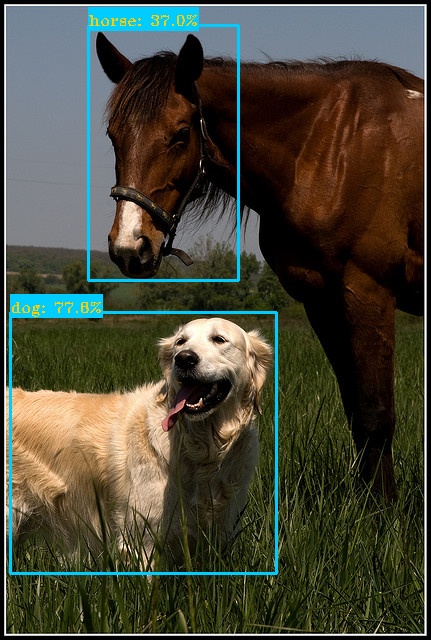目前适用的版本: v0.1
我只能说太卷了!
Implementation of paper - YOLOv7: Trainable bag-of-freebies sets new state-of-the-art for real-time object detectors
MS COCO
| Model | Test Size | APtest | AP50test | AP75test | batch 1 fps | batch 32 average time |
|---|---|---|---|---|---|---|
| YOLOv7 | 640 | 51.4% | 69.7% | 55.9% | 161 fps | 2.8 ms |
| YOLOv7-X | 640 | 53.1% | 71.2% | 57.8% | 114 fps | 4.3 ms |
| YOLOv7-W6 | 1280 | 54.9% | 72.6% | 60.1% | 84 fps | 7.6 ms |
| YOLOv7-E6 | 1280 | 56.0% | 73.5% | 61.2% | 56 fps | 12.3 ms |
| YOLOv7-D6 | 1280 | 56.6% | 74.0% | 61.8% | 44 fps | 15.0 ms |
| YOLOv7-E6E | 1280 | 56.8% | 74.4% | 62.1% | 36 fps | 18.7 ms |
# create the docker container, you can change the share memory size if you have more. # 注意这个share memory尽量设置的大一点,训练的话!
sudo nvidia-docker run --name yolov7 -it -v /home/myuser/xujing/hackathon2022:/yolov7 --shm-size=64g nvcr.io/nvidia/pytorch:21.08-py3
# apt install required packages
apt update
apt install -y zip htop screen libgl1-mesa-glx
# pip install required packages
pip3 install -r requirements.txt -i https://mirrors.aliyun.com/pypi/simple/
# go to code folder
cd /yolov7YOLOv7类似于YOLOR支持YOLOv5类型的标注数据构建,如果你熟悉YOLOv5的训练集的构造过程,该部分可以直接跳过,这里我们提供了构建数据集的代码,将数据集存放在./dataset下:
./datasets/score # 存放的文件,score是数据集的名称
├─images # 训练图像,每个文件夹下存放了具体的训练图像
│ ├─train
│ └─val
└─labels # label,每个文件夹下存放了具体的txt标注文件,格式满足YOLOv5
├─train
└─val我们提供了VOC标注数据格式转换为YOLOv5标注的具体代码,存放在./dataset下,关于YOLOv5的标注细节可以参考:
- https://github.com/DataXujing/YOLO-v5
- https://github.com/DataXujing/YOLOv6#2%E6%95%B0%E6%8D%AE%E5%87%86%E5%A4%87
- 1.修改模型的配置文件
i.训练数据的配置:./data/score.yaml
train: ./dataset/score/images/train # train images
val: ./dataset/score/images/val # val images
#test: ./dataset/score/images/test # test images (optional)
# Classes
nc: 4 # number of classes
names: ['person','cat','dog','horse'] # class namesii.模型结构的配置:./cfg/training/yolov7_score.yaml
# parameters
nc: 4 # number of classes
depth_multiple: 1.0 # model depth multiple
width_multiple: 1.0 # layer channel multiple
# anchors
anchors:
- [12,16, 19,36, 40,28] # P3/8
- [36,75, 76,55, 72,146] # P4/16
- [142,110, 192,243, 459,401] # P5/32
...
python3 train.py --workers 8 --device 0 --batch-size 32 --data data/score.yaml --img 640 640 --cfg cfg/training/yolov7_score.yaml --weights '' --name yolov7 --hyp data/hyp.scratch.p5.yaml
# 一机多卡
python3 -m torch.distributed.launch --nproc_per_node 4 --master_port 9527 train.py --workers 8 --device 0,1,2,3 --sync-bn --batch-size 128 --data data/score.yaml --img 640 640 --cfg cfg/training/yolov7_score.yaml --weights '' --name yolov7 --hyp data/hyp.scratch.p5.yaml
python3 test.py --data data/score.yaml --img 640 --batch 32 --conf 0.001 --iou 0.45 --device 0 --weights ./runs/train/yolov7/weights/last.pt --name yolov7_640_val
python3 inference.py
推断效果如下:
我们实现了端到端的TensorRT模型加速,将NMS通过Plugin放入TensorRT Engine中。
- YOLOv7转ONNX
注意:如果直接转ONNX会出现scatterND节点,可以做如下修改
python3 ./models/export.py --weights ./runs/train/yolov7/weights/last.pt --img-size 640 640 --grid
- YOLOv7的前处理
YOLOv6, YOLOv7的前处理和YOLOv5是相同的。
其C++的实现如下:
void preprocess(cv::Mat& img, float data[]) {
int w, h, x, y;
float r_w = INPUT_W / (img.cols*1.0);
float r_h = INPUT_H / (img.rows*1.0);
if (r_h > r_w) {
w = INPUT_W;
h = r_w * img.rows;
x = 0;
y = (INPUT_H - h) / 2;
}
else {
w = r_h * img.cols;
h = INPUT_H;
x = (INPUT_W - w) / 2;
y = 0;
}
cv::Mat re(h, w, CV_8UC3);
cv::resize(img, re, re.size(), 0, 0, cv::INTER_LINEAR);
//cudaResize(img, re);
cv::Mat out(INPUT_H, INPUT_W, CV_8UC3, cv::Scalar(114, 114, 114));
re.copyTo(out(cv::Rect(x, y, re.cols, re.rows)));
int i = 0;
for (int row = 0; row < INPUT_H; ++row) {
uchar* uc_pixel = out.data + row * out.step;
for (int col = 0; col < INPUT_W; ++col) {
data[i] = (float)uc_pixel[2] / 255.0;
data[i + INPUT_H * INPUT_W] = (float)uc_pixel[1] / 255.0;
data[i + 2 * INPUT_H * INPUT_W] = (float)uc_pixel[0] / 255.0;
uc_pixel += 3;
++i;
}
}
}
- YOLOv7的后处理
不难发现,YOLOv5, YOLOv6, YOLOv7的后处理基本是完全相同的,TensorRT后处理的代码基本可以复用
增加后处理和NMS节点:
python tensorrt/yolov7_add_postprocess.py
python tensorrt/yolov7_add_nms.py
onnx中增加了如下节点:
- TRT序列化Engine
trtexec --onnx=last_1_nms.onnx --saveEngine=yolov7.engine --workspace=3000 --verboseVS2017下编译运行./tensorrt/yolov7









